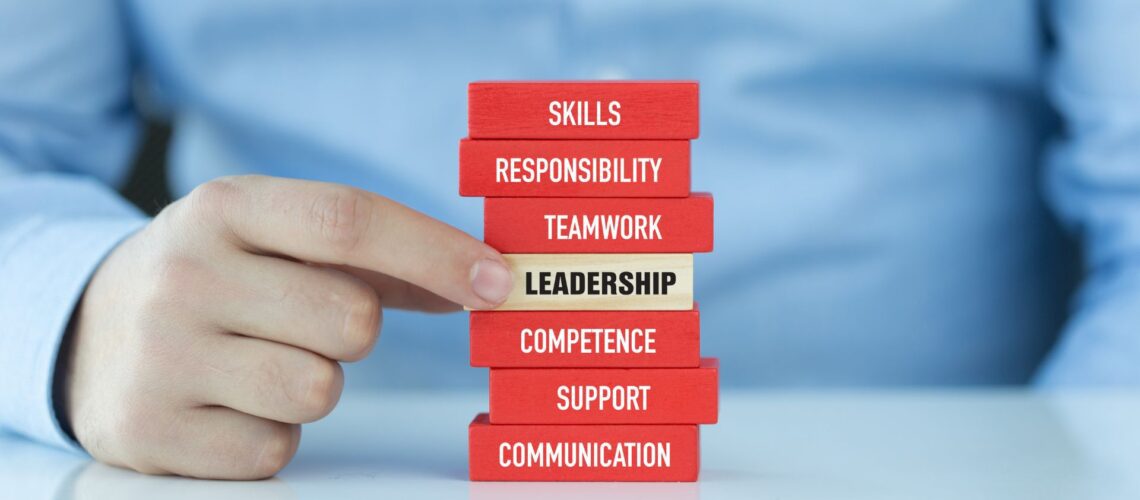Over recent months, we’ve covered a range of key skills required for developing as a new leader, including how to become self-aware and manage your mindset, mastering difficult conversations, understanding cultural intelligence, handling imposter syndrome and much more.
All the foundation skills any leader requires. So what next?
This is an important question because what gets you to one level (your skills and traits) rarely gets you to the next. This is where developing strategic leadership capabilities becomes essential.
The Leadership Journey
Becoming a leader is an exciting journey. Classically, it starts with individuals demonstrating exceptional technical ability in their role. We’ve all heard the story of the sales representative who ends up as the commercial leader of an organisation.
These people are generally proactive problem solvers who handle multiple tasks and responsibilities without being constantly performance-managed and reminded about the required results.
As they continue to perform, they stand out as someone who can handle more responsibility. The initial transition typically propels them into a leadership position, perhaps as a team leader.
Here, the first changes occur. Success starts to hinge not just on personal output but also on the ability to oversee the work of others so that the entire team performs well. A new leader learns the art of delegation, communication, and basic team leadership and management.
What Happens Next?
As a new leader continues developing to become a senior leader, the need to create a new strategic skill set occurs. A senior leader is required to shift from micro to macro thinking. Leaders must cultivate a broader organisational perspective.
No longer is the sales manager competing for resources for their team only. They understand that other business areas might need more financial resources for the company to succeed.
As leaders move to the next level, they require a strong grasp of industry dynamics and an ability to influence beyond their immediate teams. They progress from managing tasks to leading sectors, shaping business strategy, driving change and inspiring innovation across the organisation.
This rewarding journey requires continuous learning and adaptation to evolving business landscapes.
The Pitfall of Relying on Past Success
Something leaders often forget as they move to the next level is that past success doesn’t guarantee future performance. The skills, strategies and mindset that have fuelled a leader’s ascent up to a certain point might not suffice or remain relevant in their next role or under new market conditions.
As leaders climb higher, they face challenges that can’t always be addressed with textbook solutions. Each leadership level requires different competencies, emotional intelligence and strategic foresight.
External factors such as technological advancements, uncertain markets and evolving workforce expectations can render past strategies ineffective. This is why leaders must embrace a mindset of lifelong learning, humility and adaptability if they want to continue being successful.
Research from Harvard Business Publishing reveals that 70% of learning and development professionals agree leaders must master a wider range of behaviours to meet current and future business needs¹.
Core Strategic Leadership Skills to Develop
Strategic leadership goes beyond managing or leading a team. It involves various skills that help leaders identify and navigate complex challenges, drive change and make decisions with long-term implications.
Visionary Thinking
The ability to anticipate future trends and challenges by understanding changes in the industry, market conditions and continually developing technology landscapes. Visionary leaders set clear, achievable long-term goals that serve as a guide for their teams and organisations.
For technical leaders in pharmaceutical, life sciences and IT sectors, this means connecting scientific possibilities with commercial realities. Strategic leaders must anticipate regulatory changes, technological disruptions and shifting market expectations.
Effective Communication
Strategic leaders must articulate their vision, strategies and expectations clearly and persuasively. This involves actively listening to others’ ideas and feedback, facilitating open dialogue and ensuring alignment across their team and the rest of the organisation.
Communication at strategic levels differs from operational communication. Rather than focusing primarily on task assignment and progress updates, strategic communication explores possibilities, tests assumptions and builds shared understanding of complex situations.
Technical professionals often excel at detailed, data-driven communication. Strategic roles require complementing this strength with the ability to craft compelling narratives and adapt messages for diverse stakeholder groups.
Change Management
Change management is THE skill to drive transformation within any organisation. This includes understanding the necessity for change, communicating it effectively and leading the company through the process whilst managing the resistance that often occurs.
Technical environments present particular change management challenges. Professionals who built careers on technical mastery may resist changes that appear to devalue expertise or alter established processes. Strategic leaders must acknowledge these concerns whilst maintaining momentum towards necessary transformation.
Strategic Decision-Making
Making decisions considering their broader implications, assessing risks and potential benefits, and taking accountability for the outcomes is a critical capability of any senior leader. This often involves a blend of analytical thinking with intuition developed through experience.
Strategic decisions differ from operational decisions. They typically involve longer time horizons, higher uncertainty, greater complexity and difficult trade-offs between competing priorities.
Technical professionals often feel comfortable with decisions supported by complete data. Strategic leadership requires making sound judgements despite ambiguity.
Emotional Intelligence
We’ve discussed emotional intelligence multiple times because it is a critical skill to develop as a leader. Emotional intelligence is the ability to recognise and understand our emotions and those of others, and use this awareness to manage interpersonal relationships through inspiration, influence and empathy.
At strategic levels, emotional intelligence becomes increasingly important because success depends heavily on the ability to work through others, build coalitions and navigate organisational dynamics. Technical expertise alone proves insufficient.
Strategic leaders with high emotional intelligence read situations accurately, understand stakeholder motivations and adapt their approach based on interpersonal dynamics.
Resilience and Flexibility
The capacity to be flexible and adapt to changing circumstances whilst maintaining focus on the end goal is a key capability of strategic leaders. Resilience helps leaders cope with setbacks, learn from failure and remain optimistic about the future.
Strategic leadership involves navigating ongoing uncertainty and complexity. Plans change, stakeholders shift positions and external conditions evolve. Leaders who rigidly adhere to original approaches despite changing circumstances struggle to succeed.
Building resilience involves developing support networks, maintaining perspective during setbacks and viewing challenges as learning opportunities rather than personal failures.
Strategic Planning and Execution
Developing, communicating, executing and sustaining corporate strategic initiatives requires a deep understanding of the organisation’s internal and external environments, resource allocation and strategic flexibility to adapt plans as conditions change.
Strategic planning at senior levels differs markedly from operational planning. Rather than focusing on quarterly deliverables, strategic leaders consider multi-year horizons, balancing current performance demands with long-term capability building.
Developing Your Strategic Leadership Capabilities
Developing these strategic leadership skills often requires conscious effort, self-reflection, continuous learning and feedback from mentors or coaches. They are vital for any leader transitioning from managerial to strategic leadership positions.
Formal development programmes provide frameworks and tools that accelerate strategic capability growth. Qualifications such as CMI Level 7 Strategic Management and Leadership offer systematic approaches to developing strategic competencies alongside peer networks of other developing leaders.
Strategic leaders benefit from exposure to different viewpoints and contexts through cross-industry networks, mentorship from leaders in different sectors or relationships with colleagues who think differently. Technical professionals can particularly benefit from understanding commercial, operational and human resources perspectives.
Strategic leadership skills develop through practice, not just study. Leaders can seek opportunities by volunteering for cross-functional projects, participating in strategic planning processes or taking stretch assignments that require influencing without direct authority.

Frequently Asked Questions About Strategic Leadership Development
Management focuses on executing established processes, coordinating resources and delivering defined results. Strategic leadership involves setting organisational direction, anticipating future challenges and enabling others to achieve long-term goals. Whilst managers optimise current operations, strategic leaders shape future possibilities. The transition typically involves moving from hands-on work to influencing through others and focusing on longer time horizons with greater complexity and ambiguity.
Strategic leadership development is an ongoing journey rather than a destination. Most professionals require 2-3 years to make initial transitions from operational to strategic roles, but mastery continues throughout careers. Formal development programmes typically span 6-12 months, providing frameworks and tools that accelerate growth. However, effective development requires sustained practice, reflection and learning from experience over extended periods.
Absolutely. Technical professionals bring valuable capabilities to strategic leadership including analytical thinking, problem-solving skills and understanding of complex systems. The key lies in complementing technical expertise with broader business awareness, influencing skills and comfort with ambiguity. Many successful strategic leaders in science and technology sectors built careers on technical foundations before developing strategic capabilities through deliberate development and experience.
Taking the Next Step in Your Leadership Journey
The journey from successful manager to effective strategic leader represents one of professional development’s most significant transitions. It requires new skills, different thinking patterns and evolved approaches to creating value and impact.
The rewarding journey from technical expert to strategic leader requires continuous learning and adaptation to evolving business landscapes. Past success doesn’t guarantee future performance. The skills, strategies and mindset that fuelled initial ascent might not remain relevant under new market conditions or in more senior roles.
Each leadership level requires different competencies, emotional intelligence and strategic foresight. This is why embracing lifelong learning, humility and adaptability proves essential for continued success.
For technical professionals in pharmaceutical, life sciences and IT sectors, strategic leadership development offers opportunities to create greater influence, shape organisational direction and drive meaningful change in dynamic industries.
The question isn’t whether to develop strategic leadership capabilities but when to start and how to approach the journey most effectively.

